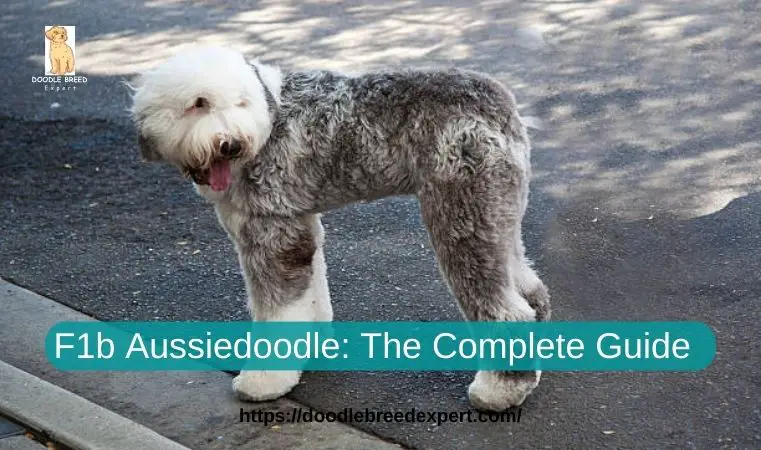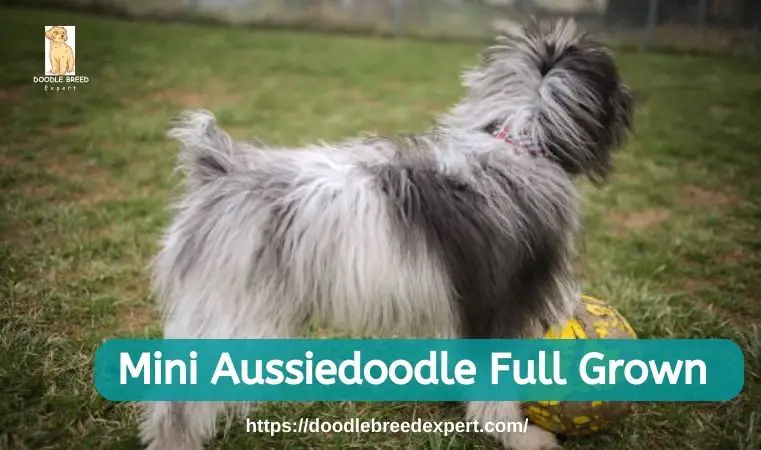Australian Labradoodle vs Aussiedoodle: The many breeds available for the perfect canine companion often leave interested dog owners flabbergasted. Out of the number, there are two prevalent mixed breeds: the Australian Labradoodle and the Aussiedoodle. Both intelligent breeds, boasting a friendly disposition and physical appearance, make them suitable for families, singles, and seniors. The following article compares an Australian Labradoodle vs Aussiedoodle in terms of history, nature, character, grooming needs, health issues, and training demands, thus helping prospective pet owners with the proper insight to make a pick.
Overview Historically: Australian Labradoodle vs Aussiedoodle
Australian Labradoodle
What its name does not suggest, however, is the Australian Labradoodle vs Aussiedoodle being at all an ordinary blend of the Labrador Retriever and the Poodle. Was the backing for its formation in the 1980s a drive to create a hypoallergenic guide dog? Initially, the Labrador Retriever was mated to a Standard Poodle by an Australian breeder named Wally Conron. Still, several other breeds were incorporated by English Cocker breeders over time, including the English Cocker Spaniel, American Cocker Spaniel, and Irish Water Spaniel, for developing and enhancing some traits they desired in the breed. This made it a multigenerational breed with a breed consistency of temperament and coat quality.
Aussiedoodle
Aussiedoodle is a relatively new dog breed, a mix between the Australian Shepherd and Poodle. Popularity, indeed, is what this particular breed has experienced in the past two decades due to the rapidly growing demand for designer dogs. In the breed, the Australian Shepherd contributes to the mix: intelligence, lots of energy, and instincts from a herding dog; the Poodle gives its classically hypoallergenic coat and more intelligence. An Aussiedoodle, on the other hand, does not have the same background as an Australian Labradoodle, and this lack of multigenerational breeding may bring variability to structure and temperament.
Physical Characteristics
Australian Labradoodle
These three sizes may be classified as Standard, Medium, and Miniature Australian Labradoodles. Depending on the size, they may weigh 15 to 65 pounds but have a shoulder height ranging from 14 to 24 inches. They should have a usual color with a curl or wave, classifying as a friendly and hypoallergenic dog to allergic people having a coat that feels exceptionally soft. Colors vary from chocolate, cream, apricot, gold, red to black and parti—two or more colors allowed.
Aussiedoodle
They also come in different sizes, mainly due to the type of Poodle used in crossing: Standard, Miniature, or Toy. Weight may be in the 10- to 70-pound range while height may vary significantly, 10–23 inches at the shoulder. Coat patterns include the beautiful patterns from an Australian Shepherd, such as merles. But solid or parti-color dogs are also not uncommon, either. They mostly have curly or wavy or straight coats and can sometimes be low-shedding, if not hypoallergenic.
Temperament and Personality
Australian Labradoodle
The Australian Labradoodle vs Aussiedoodle is an outgoing, friendly, and open dog with other animals, children, and even cats. Great companion dogs, good in the home. They can work well in therapy works, obedience, and agility due to their ability and willing nature to please people and their intelligence. Australia and Labradoodles are also good and adaptable in different living situations, which vary from apartments to big houses with vast yards.
Aussiedoodle
Aussiedoodles are lively, intelligent, and affectionate. The Australian Shepherd most likely inherits herding instincts and will generally be found exhibiting small children or any other pets as their moving stock. However, proper management with adequate training and socialization can curb the same behavior. Responsive and agile, Aussiedoodles truly excel in an active family or with a person who enjoys these outdoor activities of hiking, jogging, or playing frisbee with them. It also makes them swift learners but, at the same time, may lead to boredom and even destructive behavior, so they need to be given appropriate challenges.
Grooming and Maintenance
Australian Labradoodle
Grooming for the Australian Labradoodle depends on the coat type. Generally, their coats need frequent brushing to discourage matting and tangling. Regular grooming done professionally every 6 to 8 weeks optimizes the health and looks of their coats. Even though they are low shedders, ear cleaning, nail care, and tooth brushing should be regular for an Australian Labradoodle. Periodic baths keep the coats clean and free from debris.
Aussiedoodle
Aussiedoodles will also need more frequent grooming, depending on their coat. Curly coats benefit most from regular grooming and eliminating matting and tangling, while other coats may require less attention. A grooming regime by a professional 8-12 weekly helps to keep the coat in good condition. Like an Australian Labradoodle, Aussiedoodles also require regular ear cleaning, nail trimming, and dental care. Give their skin and coat a bath when necessary.

Human Health and Lifespan:
Australian Labradoodle
Australian Labradoodles are generally healthy dogs with a long life, mainly older than 12 to 15 years. They may accede to specific maladies common among their kind. Some of these ailments include:
- Hip dysplasia is a genetic condition when your hip joint does not fit appropriately into your hip socket, leading to arthritis and pain.
- Elbow Dysplasia: Similar to hip dysplasia, elbow dysplasia affects another joint, and because of it, it causes lameness and pain.
- Progressive Retinal Atrophy (PRA) Is a group of genetic diseases where the retina progressively deteriorates until blindness occurs.
- Allergies: Allergies or skin allergies are commonly caused by the environment and food.
- Addison’s Disease: Dysfunction of adrenal glands that might cause fatigue, diarrhea, and electrolyte imbalances.
Responsible breeders do health screening of breeding dogs to reduce the risk of such conditions being passed down to the puppies. Regular veterinary check-ups and a healthy diet can also help in the early detection and management of these health issues.
Aussiedoodle
Aussiedoodles are generally a healthy breed. The life expectancy is around 10 to 13 years. They will have most of the same common illnesses affecting their parents.
- Hip Dysplasia: The condition can be inherited like the Australian Labradoodles, causing joint pains and arthritis in Aussiedoodles.
- Elbow Dysplasia: Another joint-related issue that can cause pain and lameness.
- Progressive Retinal Atrophy (PRA): Degenerative eye condition leading to blindness.
- Cataract: Opacity of the human lens in an eye, which may cause poor vision, resulting in surgical means of treatment.
- Epilepsy: Neurologic disorder with seizure activity; the patient may require lifelong treatment.
- Van Willebrand’s Disease: A bleeding disorder caused by the inability of blood to clot.
To avoid deadly or severe health issues in an Aussiedoodle, one has to pick a breeder who tests their breeding stock to eliminate certain genetic diseases. Proper veterinary check-ups, good food, and moderate activity are very controlling and preventive of some of these diseases, helping to make a big difference in the health and quality of life for the Australian Labradoodle and the Aussiedoodle so they can live healthily and merrily.
Training and Exercise: Australian Labradoodle vs Aussiedoodle
Australian Labradoodle
Australian Labradoodles are intelligent and love to please, so they are relatively quickly trained. Positive reinforcement works best because they enjoy praise, treats, and play. Socialization and early obedience training are crucial for developing into well-behaved dogs. Australian Labradoodles require regular exercise to make them healthy and happier. Daily walking or playing, physical activities, and mental stimulations, like puzzle toys or practice in agility, should be done.
Aussiedoodle
They are also brilliant and easily trainable dogs. However, they are a bit stubborn due to their Australian Shepherd genes. They can quickly and effectively be trained using consistent, positive cleanup techniques. Early socialization may be a way of preventing potential behavioral problems. They carry huge energy. Therefore, they need lots of exercise, without which they cannot stay fit and sound, either physically or mentally. Daily walking, running, and even playing with them are great mental exercises. Without this exercise, they become bored and need something to keep them busy to prevent destructive behavior.
Read Also: Aussiedoodle: Intelligent and Adorable Dog Breed
Suitability for Families and Living Environments
Australian Labradoodle
Australian Labradoodles make excellent family companions, are a good choice for a single person, and are great for older people. They easily adjust as indoor or outdoor dogs in an apartment or a large home with a huge yard. Australian Labradoodle also quickly get along with kids and other pets, so they can easily fit into a house with numerous pets. They are also well-disposed to be employed in work as therapy or service dogs due to their mild temperaments.
Aussiedoodle
Aussiedoodles are happier in the company of short-statured families or individuals who can give them much time outside the home, as these smalls may not fully adapt to apartment life without the extra excuse of a daily walk with playtime. Aussiedoodles also do great around children and other pets because they come from good stock lines; however, they have herding backgrounds, so they may need some management to prevent this from arising. They also make excellent companions with people who are outdoor junkies and are involved in dog sports like agility or flyball.

FAQs: Australian Labradoodle vs Aussiedoodle
What is the main difference between an Australian Labradoodle and an Aussiedoodle?
The principal variance stems in terms of their parents and breeding background. While the Australian Labradoodle has been bred with the parents of a Labrador Retriever, Poodle, and other breeds such as the Cocker Spaniel and Irish Water Spaniel, it contains consistency because its breeders are selective. On the other hand, an Aussiedoodle is a mix between an Australian Shepherd and a Poodle, making it relatively recent and hence variable in characteristics.
Which breed is more hypoallergenic?
Both breeds are generally considered hypoallergenic due to their Poodle ancestry, which tends to have a non-shedding coat. In that sense, typically, through multigenerational selective breeding for hypoallergenic coat type, the Australian Labradoodle does tend to have a more significant amount of its offspring that is considered hypoallergenic and low-shedding compared to the Aussiedoodle.
How would you describe their energy levels?
On the other hand, Aussiedoodles seem to have more energy due to the active herding background of the Australian Shepherd. They require much more exercise and mental stimulation. Although Australian Labradoodles also need frequent exercise, they are generally much calmer and more flexible regarding living environments.
Do these dog breeds get along well with children and other pets?
Yes, both breeds are great with children and other animals. Australian Labradoodles are extremely friendly, social, and gentle, making them the ideal family dog. Aussiedoodles also have extroverted and friendly personalities like the previous one but may have herding behaviors, which discipline itself in learning and socialization will dissuade or mute.
What does each breed require for grooming?
All the breeds will need hairs to be groomed once every month for maintenance. Australian Labradoodles will require brushing regularly, especially if it has a curly coat. Furthermore, Australian Labradoodles need professional grooming every 6 to 8 weeks. Aussiedoodles must also be brushed periodically to PREVENT matting, and they need regular professional grooming for an average of 8 to 12 weeks. The dogs will also require regular cleaning of the ears, trimming the toenails, and, most important, care for the teeth.
What are their training needs differences?
Double Doodles and Aussiedoodles are two very intelligent breeds and trainable. Generally, Labradoodles are easily motivated by pleasing people and will work well with positive reinforcement training. Sorry, but both will learn to mind, as both characteristics involve learning to make a needful person happy. Early training, socialization, consistency in training, and the importance of providing enough mental exercises are critical to ensure a well-behaved adult dog.
What are the inherent health problems that each breed is most prone to?
Prone to hip and elbow dysplasia, progressive retinal atrophy, and allergies. Aussiedoodles can become vulnerable to hip dysplasia and are at risk priority-wise to PRA, cataracts, and epilepsy. The best mitigating factor to minimize these risks is obtaining an Aussiedoodle from an experienced breeder who tests the health of his stock.
What’s the breed with the most extended lifespan?
In Australian Labradoodles, a life expectancy of 12 to 15 years is expected, while Aussiedoodles live on average from 10 to 13 years. Of course, this can vary with genetics, diet, and general care.
Is either one of these breeds happy living in an apartment?
Apartment life in Australian Labradoodles—mainly, but not only—the miniature and medium sizes can be accommodated well with good exercise and mental stimulation. Aussiedoodles, seeming to do well in apartment life, must have higher energy, so there must be more physical and mental activities to prevent the dog from destructively behaving and showing signs of boredom.
How do I decide between an Australian Labradoodle and an Aussiedoodle?
Two Rockets Ridi depends on your lifestyles and preferences: If you want a calmer, adaptable dog with a hypoallergenic coat that is constantly changing, one will lean towards the Australian Labradoodle. On the other hand, if you want a highly energetic, intelligent dog with the capability that match this with sports to enjoy, then maybe this Aussiedoodle is your dog. Consider your living arrangements, activity levels, and how much time you can dedicate to grooming and training.
What are the costs of owning each type?
The base prices to purchase are also high; they start at $1,500 and can exceed $3,000, based on breeder and lineage. Both have accompanying costs for grooming, vet care, food, obedience, and equipment. Ongoing costs for any of these dogs might pan out to be pretty similar. Still, an Aussiedoodle possibly costs more to provide training and mental stimulation concerning their higher energy levels.
Conclusion: Australian Labradoodle vs Aussiedoodle
The Australian Labradoodle and the Aussiedoodle are great pets with each characteristic and need. The Australian Labradoodle is the more established of the two breeds. Due to its friendliness, adaptability, and hypoallergenic character toward its coat, it is recognized for its skilful, gentle, and well-fitting behaviors around households. Alternately, the energetic and intelligent nature of the Aussiedoodle fits ideally with people who have activeness in the family or who can show ample amounts of exercise and stimulation.
In the end, however, your lifestyle, living conditions, and preferences all play a big part in the choice one would ultimately make. Potential dog owners who know how they differ and are comparable get a good idea of what to expect of the perfect furry companion that will enrich their lives through an Australian Labradoodle or an Aussiedoodle.
References:
- Analysis of Australian labradoodle genome reveals an emphasis on the “oodle.” (2020, September 20). ScienceDaily. https://www.sciencedaily.com/releases/2020/09/200910150330.htm
- Dickson, P. (2024, July 10). Aussiedoodle vs Labradoodle Dog Breed: Differences Explained. Dogster. https://www.dogster.com/dog-breeds/aussiedoodle-vs-labradoodle
- Davis, N. (2020, September 10). Labradoodle study reveals dogs are actually mostly poodle. The Guardian. https://www.theguardian.com/lifeandstyle/2020/sep/10/labradoodle-study-reveals-dogs-are-actually-mostly-poodle
- Arnold, V. L. (2023, December 21). Top 14 Types of Doodle Dogs. PetMD. https://www.petmd.com/dog/care/types-of-doodle-dogs
- Cpdt-Ka, D. D. B. (2024, May 27). Aussiedoodle Dog Breed: Info, Pictures, Facts, & Traits – Dogster. Dogster. https://www.dogster.com/dog-breeds/aussiedoodle
- https://www.differencebetween.com/what-is-the-difference-between-aussiedoodle-and-australian-labradoodle/






